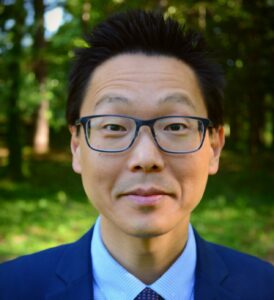
Diversity as Strength and Challenge in Theological Education
In a previous blog, I surmised that the diversity of students within theological education is one of its greatest strengths and one of its deepest challenges. One reason that theological institutions comprise among the most diverse student populations in higher education is access. Comparatively speaking, theological schools have fewer barriers to enrollment versus other graduate schools in terms of acceptance rates and tuition costs.
In 2023, the average acceptance rates for Master of Divinity and Master of Arts admissions across all member institutions of the Association of Theological Schools was 68 percent and 72 percent respectively. In the same year, the average acceptance rate for law school admissions in the United States was roughly 42 percent. Some law schools, such as Yale and Harvard, had acceptance rates under 10 percent. The cost of theological education is also significantly lower than many other graduate programs. For example, the annual tuition of Harvard Law School ($77,000) is more than double the annual tuition of Harvard Divinity School ($31,000) and more than triple the annual tuition of Columbia Theological Seminary ($22,000), the school where I teach.
Theological schools therefore enroll students of all ages, races, ethnicities, abilities, genders, and nationalities. Over the past twenty years or so, many theological institutions have also taken further steps to include a wider range of students through the implementation of additional learning modalities, such as fully online degree programs, alongside in-person education.
I have witnessed several evolutions in my seminary classroom over the last dozen years. The first change largely consisted of more diversity across race, ethnicity, gender, sexuality, and denomination. Straight cisgender white Presbyterian students comprised the majority, but I was teaching more students of color, more LGBTQ+ students, and more students from various Christian traditions.
The second change entailed increasing generational and vocational diversity alongside the ongoing demographic shifts due to the first change. There is now no one clear and discernable identity marker that represents the majority student population in my classroom. In terms of age, some students are in their twenties and thirties and others are in their forties, fifties, and sixties. Some will preach their first sermon at my seminary whereas others have been preaching for years. Some are working full-time in congregational ministries and other professions as they study at my seminary. Some are from the United States and others are from Brazil, Ghana, India, Kenya, Liberia, Nigeria, and other nations. Some belong to theologically liberal and progressive denominations whereas others worship in conservative and fundamentalist churches.
These differences present rich opportunities for mutuality and reciprocity as well as potential pitfalls of misunderstanding and conflict in theological education. I plan to further engage these matters in future blogs, but I want to conclude this reflection with one aspect of diversity that I find simultaneously inspiring and perplexing: The rise of multivocational students who are pursuing their seminary education while also working full-time as well as caring for their families and fulfilling other important obligations.
I am grateful that these students are in my classroom, and many have joyfully shared with me that my seminary’s commitment to greater access has made it possible for them to enroll. Because these students carry multiple responsibilities, some understandably struggle to complete assignments on time and adequately prepare for class sessions. Nearly all my students take three or more courses in our fall and spring terms because my seminary’s most generous scholarships covering the entire cost of tuition (and the entire cost of tuition and fees for African American students) are not available with part-time enrollment.
When encountering unsteady student performance, it would be immature and harmful for theological educators like me to respond with petty expressions of anger and annoyance. Yet I also feel that it is my pedagogical imperative to effectively manage class participation and course engagement. I am keenly aware that a good number of my students, including some with the busiest schedules, are faithfully doing their work, and they are rightly discouraged when some of their peers are ill-equipped for face-to-face discussions and absent or perpetually tardy in online forums. Small group activities are probably the most dismaying and frustrating when there are varying levels of student preparation. I continue to grapple with how to lean into access and compassion without compromising my standards of academic integrity and excellence.
Leave a Reply